Abstract
The pattern electroretinogram (PERG) and other tests were given to a selected group of patients with diabetes, ranging from those who had no retinopathy or funduscopic changes to those in the preproliferative state. None had visual symptoms. The PERG was found to be normal in patients with microaneurysms and a few blot haemorrhages. However, when cotton-wool spots and angiographic evidence of areas of capillary non-perfusion were present, the PERG was reduced below the normal value. Similar changes occurred with the oscillatory potentials of the ERG evoked by an intense flash, but the results were more variable. So in the individual patient the test is not a reliable indicator of the progress of the retinopathy. The value of the PERG in screening is discussed.
Full text
PDF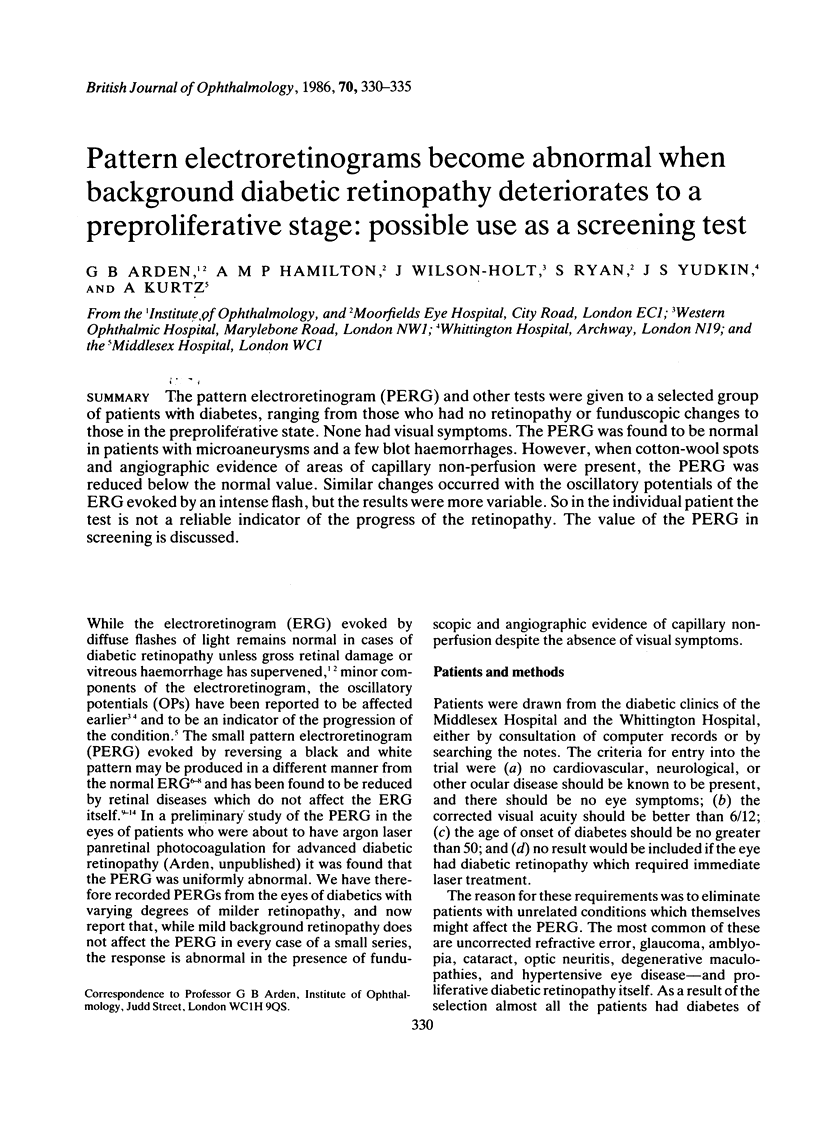
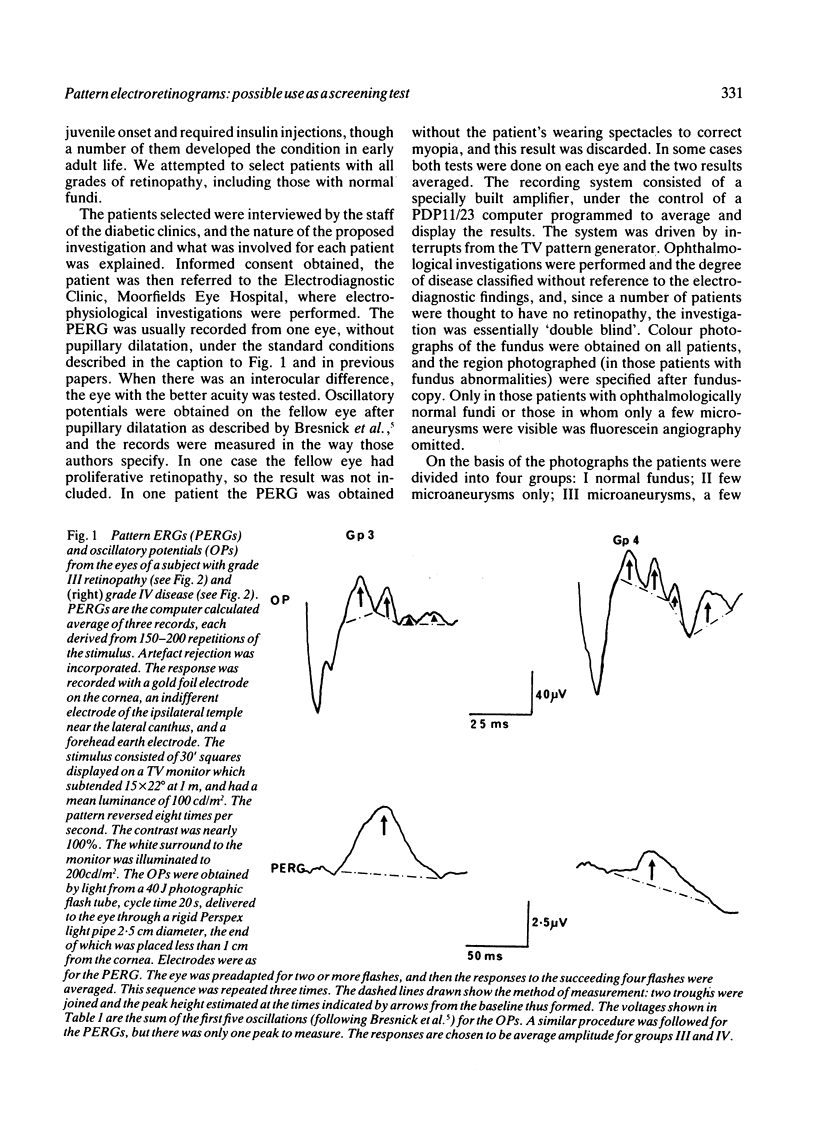
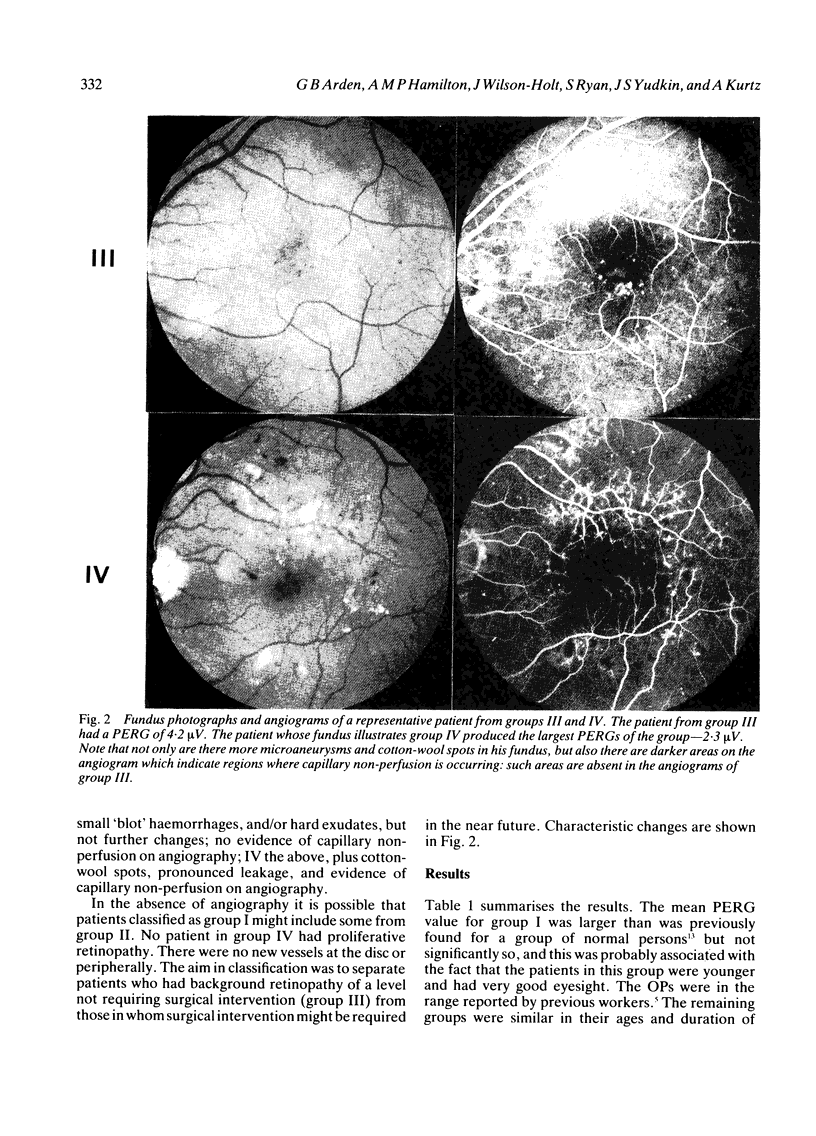
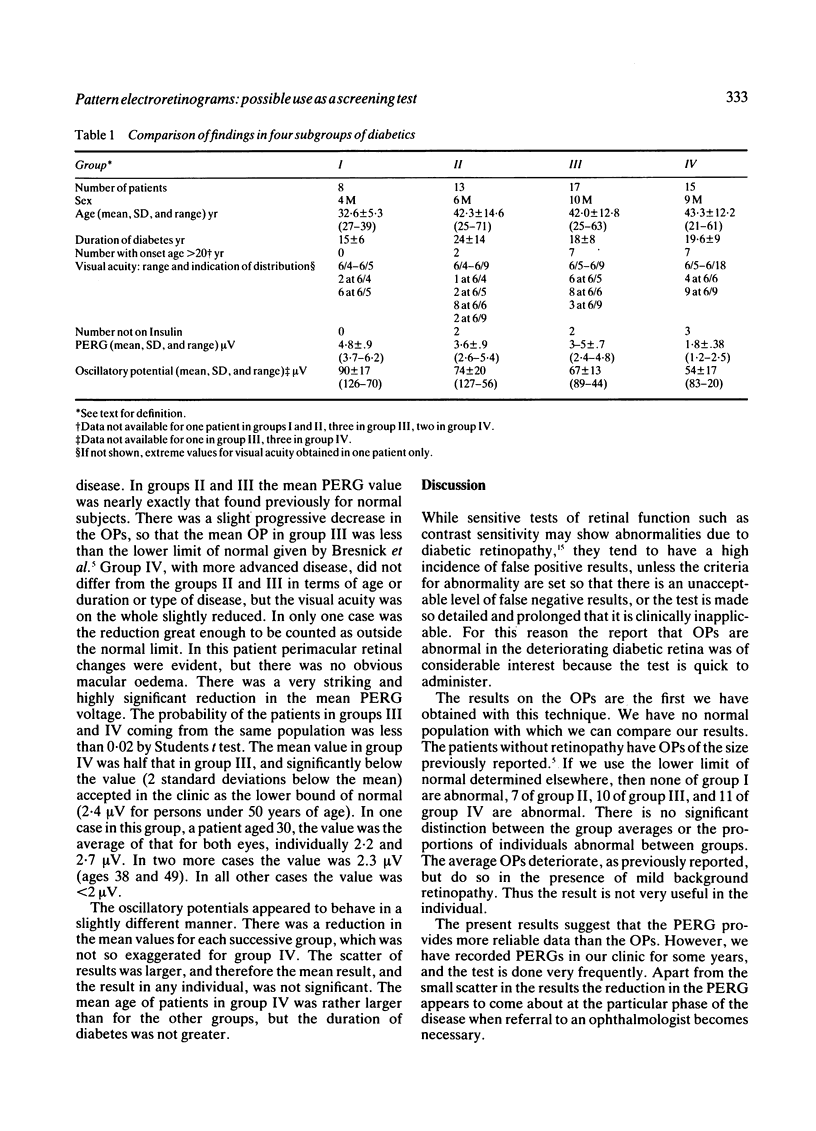
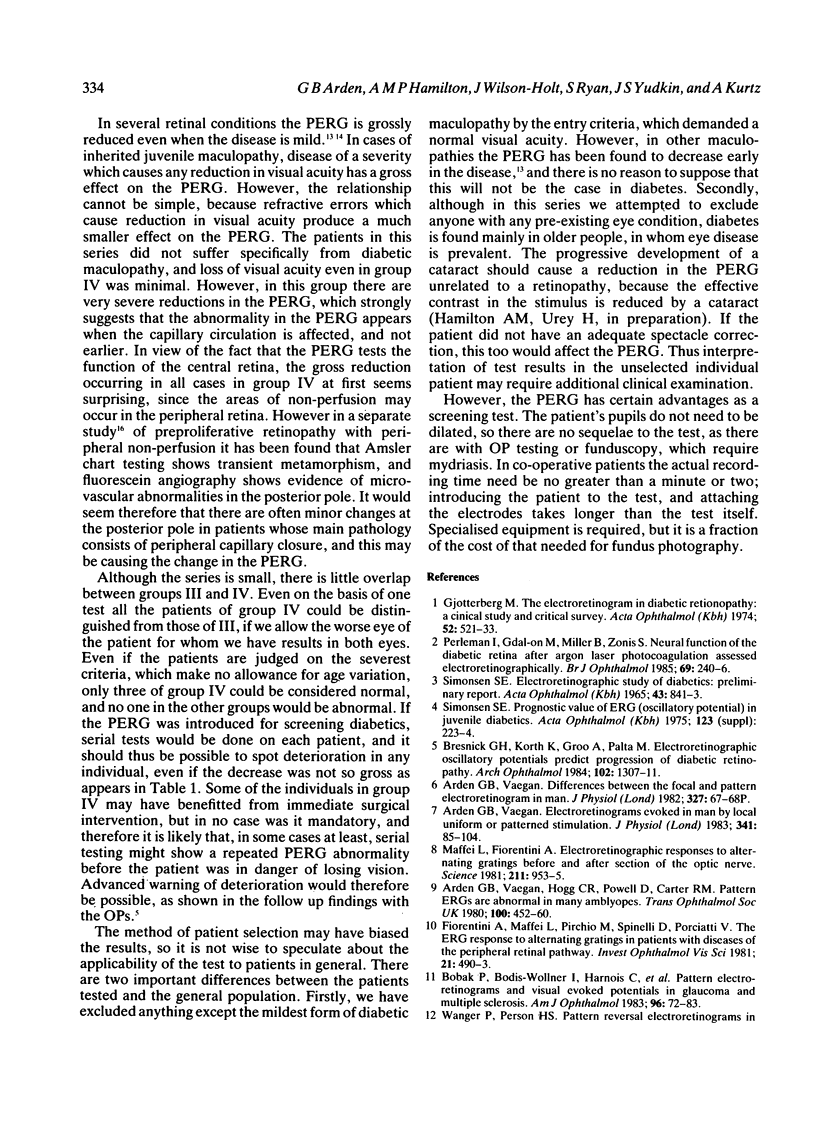
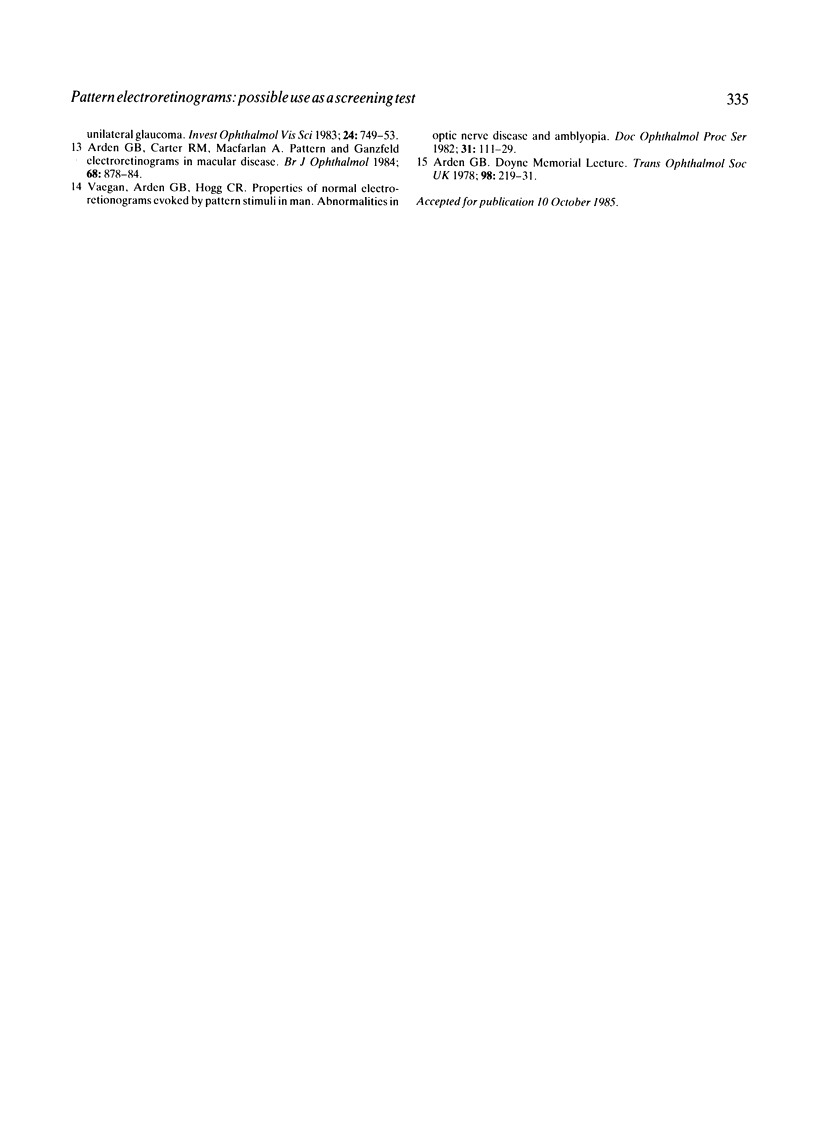
Images in this article
Selected References
These references are in PubMed. This may not be the complete list of references from this article.
- Arden G. B., Carter R. M., Macfarlan A. Pattern and Ganzfeld electroretinograms in macular disease. Br J Ophthalmol. 1984 Dec;68(12):878–884. doi: 10.1136/bjo.68.12.878. [DOI] [PMC free article] [PubMed] [Google Scholar]
- Arden G. B. Doyne Memorial Lecture, 1978. Visual loss in patients with normal visual acuity. Trans Ophthalmol Soc U K. 1978;98(2):219–231. [PubMed] [Google Scholar]
- Arden G. B., Vaegan Electroretinograms evoked in man by local uniform or patterned stimulation. J Physiol. 1983 Aug;341:85–104. doi: 10.1113/jphysiol.1983.sp014794. [DOI] [PMC free article] [PubMed] [Google Scholar]
- Bobak P., Bodis-Wollner I., Harnois C., Maffei L., Mylin L., Podos S., Thornton J. Pattern electroretinograms and visual-evoked potentials in glaucoma and multiple sclerosis. Am J Ophthalmol. 1983 Jul;96(1):72–83. doi: 10.1016/0002-9394(83)90457-9. [DOI] [PubMed] [Google Scholar]
- Bresnick G. H., Korth K., Groo A., Palta M. Electroretinographic oscillatory potentials predict progression of diabetic retinopathy. Preliminary report. Arch Ophthalmol. 1984 Sep;102(9):1307–1311. doi: 10.1001/archopht.1984.01040031057023. [DOI] [PubMed] [Google Scholar]
- Fiorentini A., Maffei L., Pirchio M., Spinelli D., Porciatti V. The ERG in response to alternating gratings in patients with diseases of the peripheral visual pathway. Invest Ophthalmol Vis Sci. 1981 Sep;21(3):490–493. [PubMed] [Google Scholar]
- Gjötterberg M. The electroretinogram in diabetic retinopathy. A clinical study and a critical survey. Acta Ophthalmol (Copenh) 1974;52(4):521–533. doi: 10.1111/j.1755-3768.1974.tb01763.x. [DOI] [PubMed] [Google Scholar]
- Gregersen E. Transactions of the Danish Ophthalmological Society September 1964--December 1964. Acta Ophthalmol (Copenh) 1965;43(6):841–843. doi: 10.1111/j.1755-3768.1965.tb07898.x. [DOI] [PubMed] [Google Scholar]
- Mafei L., Fiorentini A. Electroretinographic responses to alternating gratings before and after section of the optic nerve. Science. 1981 Feb 27;211(4485):953–955. doi: 10.1126/science.7466369. [DOI] [PubMed] [Google Scholar]
- Perlman I., Gdal-On M., Miller B., Zonis S. Retinal function of the diabetic retina after argon laser photocoagulation assessed electroretinographically. Br J Ophthalmol. 1985 Apr;69(4):240–246. doi: 10.1136/bjo.69.4.240. [DOI] [PMC free article] [PubMed] [Google Scholar]
- Simonsen S. E. Prognostic value of ERG (oscillatory potential) in juvenile diabetics. Acta Ophthalmol Suppl. 1974;123:223–224. [PubMed] [Google Scholar]
- Wanger P., Persson H. E. Pattern-reversal electroretinograms in unilateral glaucoma. Invest Ophthalmol Vis Sci. 1983 Jun;24(6):749–753. [PubMed] [Google Scholar]



